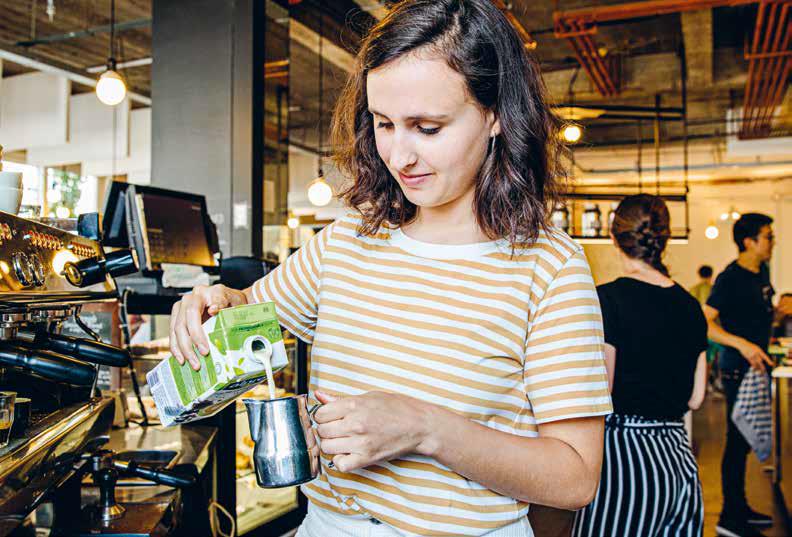Coffee myths certainly exist. And they are probably fed by the hype we have seen in recent years. In this blog we will debunk the following common misconceptions about coffee:
- 'The best coffee comes from Italy!'
- 'Kopi Luwak is the best coffee bean in the world.'
- 'What is a barista? Oh that's a person who makes hearts in a cappuccino.'
- 'Coffee must be black and hot!'
‘The best coffee comes from Italy!’
The climate would really have to change radically before it became possible to grow a coffee bean in Italy, unless you did it indoors as a hobby. So actually, Italian coffee does not exist.
So where does the myth come from? Italy owes its coffee reputation to the excellent materials produced there. The list of the best coffee grinders, machines and accessories in the world has always included numerous Italian manufacturers. And that remains so today. The espresso culture originated in Italy, while we in Northern Europe only had a filter coffee culture. It is still only a few decades ago that the espresso culture arrived in the rest of the world.
So it is absolutely true that the knowledge required to prepare espressos came from Italy. A cup of coffee in Italy still meets a number of criteria: it must be strong, bitter, short, cheap and with lots of sugar. Depending on the region, you will get an espresso ranging from 100% robusta (southern Italy), 50% arabica/50% robusta (central Italy) to possibly 100% arabica in northern Italy. So you don’t have to go to Italy for the best espresso.
‘Kopi luwak is the best coffee bean in the world.’
Kopi luwak are coffee beans that are eaten by the civet, sometimes wrongly called the civet cat. This is not a cat. It is a mammal that is more closely related to the mongoose. It originally lived in the wild in Indonesia where it ate the coffee cherry (or coffee berry), because it has tasty fruity flesh around the coffee bean. The coffee bean inside was excreted later in the animal’s excrement.
Originally, plantation dwellers collected the beans that they found in the animal’s droppings. They were considered tastier than the other coffee beans that were grown in Indonesia. Why was that? Because the civet actually selected out particular beans, only eating the mature and thus sweet berries. So, the beans were actually more mature and therefore better-quality than berries that were picked when they were too green. And in those times, coffee was not processed as finely as it is today.
But much has changed through the course of time. Kopi luwak coffee was originally very scarce because it only came from beans eaten by wild civets. A number of commercial companies bred civets in captivity, with the sole purpose of feeding them coffee cherries every day, so that they could collect and sell the excreted beans at extortionate prices. This is an incredibly profitable business considering that the actual beans fed to these civets are of very poor quality and therefore cost virtually nothing. Yet as soon as they have passed through the civets’ digestive systems, they become worth a few hundred dollars per pound. And yet this type of bean is still sold to unaware customers all around the world as the most expensive and exclusive type of coffee.
‘What is a barista? Oh, that’s a person who makes hearts in a cappuccino.’
Latte art in a cappuccino is often a delight to the eye and impressive. And you will certainly be aware of that if you are a layman who has tried to create designs on your cappuccino at home and discovered how much training it actually requires.
But a barista is much more than someone who can make pretty designs in a latte. In fact, those are two separate crafts. And making a perfect espresso requires much more skill than creating a beautiful cappuccino. A top barista knows his or her coffee, knows the preparation process inside out, understands the influence on flavour of the processing the bean has undergone, knows all about the roasting process and therefore has a good idea of the best brewing process to use to get the very best from a particular coffee. And besides all that, he or she can also serve a perfect cappuccino too!
‘Coffee must be black and hot!’
Another popular myth. No, coffee does not have to be black. In fact, well-roasted coffee is brown, i.e. coffee-coloured. Then why do you usually get coffee that has a very black colour? Because commercial, industrially roasted coffee that you buy in the supermarket is roasted too dark (i.e. burned). All the aromas and flavours are burned out of the bean. The only thing that you have left is a burnt taste and a deep black colour.
Nowadays, many coffee bars serve slow coffee or filter coffee served in a glass jug. You immediately notice that the colour is often quite light. The lightness of the colour makes some customers think that the coffee is watery, and they are surprised by the range of aromas and flavours that they experience when they taste it. Compare it with preparing a really good fillet steak properly. You are not going to cook it until it is black, because you will lose all the flavours of the meat. The same applies to coffee. Quality coffee should never be roasted until it is black.
A cup of coffee must be hot? You will notice that the flavour of filter coffee becomes much clearer as the temperature drops. This is logical, because if the coffee is too hot it anaesthetizes your taste buds and you can detect far fewer flavours. In addition, a number of flavours need more time to develop in the brew. You can read everything about filter coffee in our blog: Brewing the perfect cup with filter coffee.
